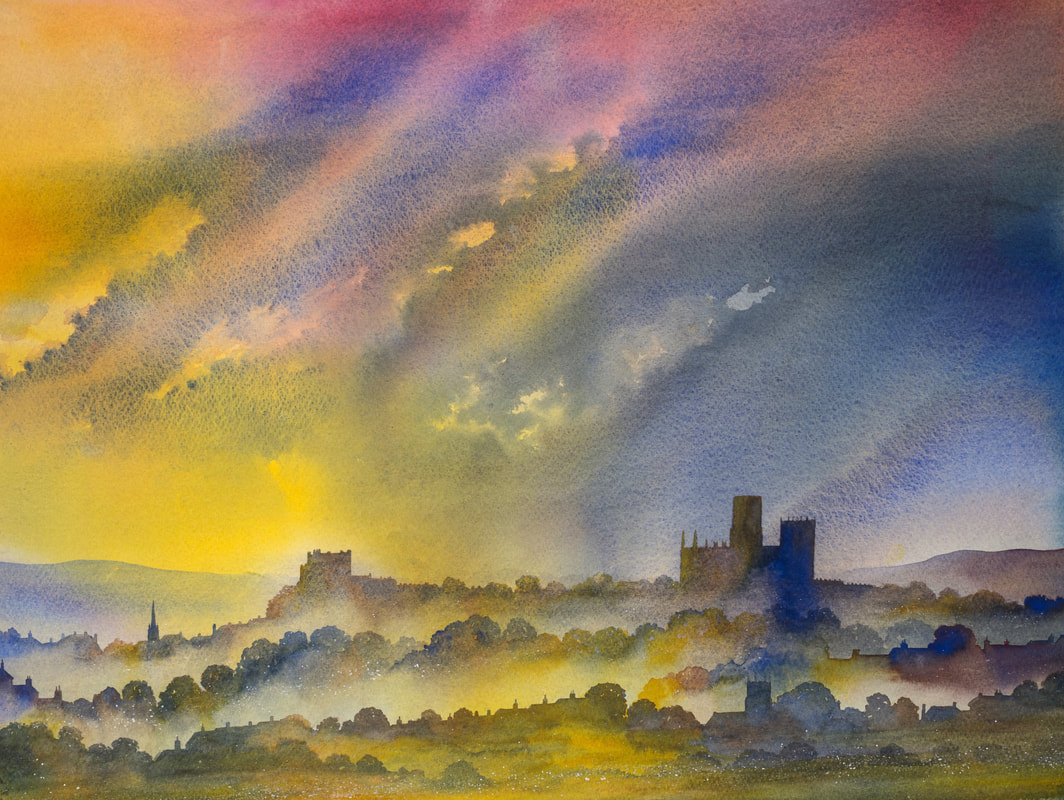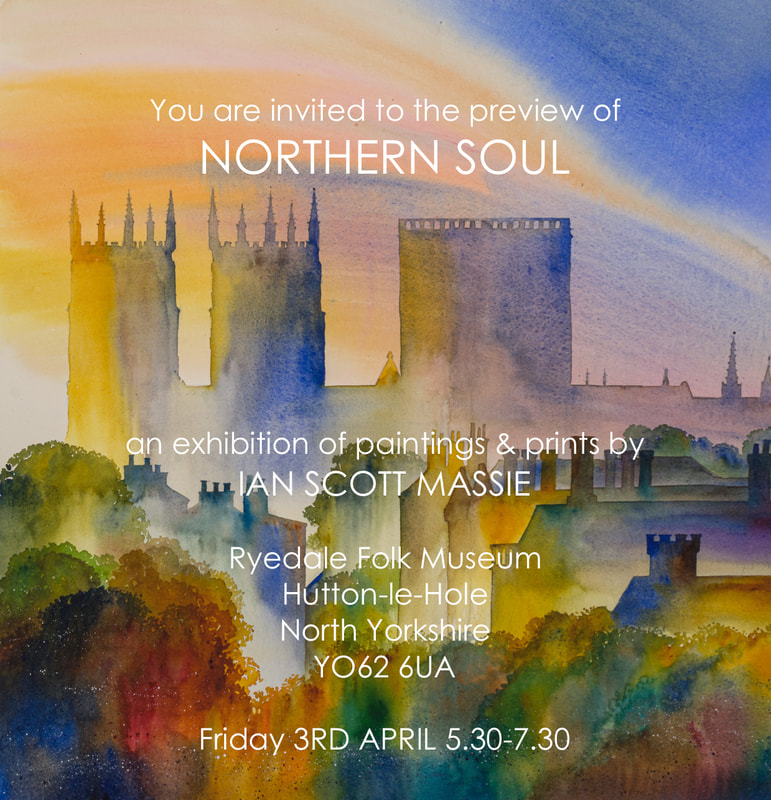|
Durham Cathedral from the Viaduct, watercolour In 2016 I had the idea of creating an exhibition about my life in the North of England. The idea grew into a series of paintings and prints and then into a book. I found that delving into my past, trying to see how I first saw the places I discovered in the North, was an amazing source of inspiration.
The exhibition began touring in 2019 having its debut at Cannon Hall near Barnsley and then moving to Masham Gallery. This year it's going to Ryedale Folk Museum, Farfield Mill and Sunny Banks Mills - all places which relate to different aspects of the North and my time there. This year I'd thought I'd accompany the exhibition with an occasional blog including extracts from the book and some of the pictures. Here's the first instalment. The year is 1973... "I came to the North of England in September 1973. At the age of twenty I had come to learn how to be a music teacher, at a college in Durham. I was deeply unhappy. I was going to a strange city a long way from home, my lovely father was dying of cancer, I was about to study for a career that I was in no way sure I wanted to do and, since my exam results had been appalling, I had great doubts about my ability to stay the course. Little did I know that the North would make me. I would grow up there, discover talents for teaching and making art that I never suspected, discover places and music and stories that I would love for the rest of my life, and find happiness. Along the way one question would occasionally surface: What makes the North the North? It isn’t simply that old cliche: a hard-working alternative to a soft and lazy South, and yet it’s a hard question to answer. It is an alternative of sorts - an alternative to the dreamy chocolate-box portrayal of England that exists only in the imagination. Perhaps, if we’re honest, its the truth of England, where all things are seen clearly: the incomparable beauty of the landscape, the harsh ugliness left by industry, the great wealth of the aristocracy, the miserable housing of the poor, the civic pride of the mill towns and a people as likely to be mobilised by political oratory as by a comedian with a ukulele. The North is a place made up of a multitude of races, each with their own deep pool of stories which combine to make a shared way of life. Mining, the Potato Famine, the textile industry, persecution, war and politics all brought different people to the North. The list goes on. So I’ve approached the Northern Soul as though it were a jigsaw puzzle: examining the pieces I’ve come across over the years for what they can tell me. I’ve got some bits of the edge and some promising parts of the middle but I’d be lying if I said I was close to completing it. There are parts of the North I know only slightly and others I know like the back of my hand, and I’ll plead guilty now to favouring some places over others because that’s just the way it is. So this book is at once the log of a long, as yet unfinished, journey, and a love letter to the North of England. It’s about the places I’ve known and painted, and what part they play in this complex, careworn, mountainous, multifaceted, wave-tossed, warm-welcoming, windblown, freezing, friendly, tough spirited, tender hearted, rusty, rebellious, ruinous, green, golden, chilled- out, challenging, deep-rooted, dale-scattered, subtle, smoky, special land. " From "Northern Soul" by Ian Scott Massie The book is available from Masham Gallery http://www.mashamgallery.co.uk/store/p379/Northern_Soul.html The exhibition opens at Ryedale Folk Museum, Hutton le Hole with a preview on April 3rd.
2 Comments
5/14/2024 11:53:39 am
The age of twenty I had come to learn how to be a music teacher, at a college in Durham. I was deeply unhappy. I was going to a strange city a long way from home, my lovely father was dying of cancer, I’m so thankful for your helpful post!
Reply
Leave a Reply. |
Archives
June 2024
|

